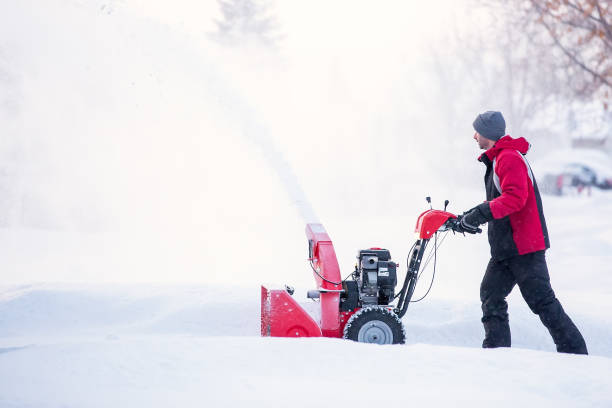You may have suspected it, so here’s the confirmation–extreme weather is getting worse. With it comes the inevitable storms, blizzards, ice, snow, lost lives, and as much as $1 billion in damage.
While you may look forward to picturesque snow landscapes, hot chocolate, and warm fires, it can get ugly fast without proper preparation. The last thing you need is to be stranded in the middle of a storm without the right tools. Prepare yourself for a winter storm with these essential tools:
1. Shovels
A snow shovel is a necessity during winter periods. They are one of the many essential tools for winter storms. Especially for clearing up driveways and sidewalks of ice and snow. What you need is a shovel with an ergonomic design that places little strain on your body and clears the snow fast.
If you aim to do a combination of lifting and pushing the snow, choose a shovel with a blade measuring 24 inches in width. On the other hand, if you primarily intend to lift the snow, go for a narrow blade. If you are predominantly going to push, opt for a shovel with a broader blade.
2. Snowblowers
If shoveling is not up your alley or faced with deep snow that makes shoveling impractical, your best bet is a snowblower. These even have the power to scoop up compacted snow left by cars, as long you get to it before it freezes.
A basic single-stage snowblower will do if you are dealing with shallow snowfall up to 6 inches. For 12-inch deep snow, choose a 2-stage snow blower.
Purchase a snowblower with a self-propelled feature so you won’t have to push it into heavy snow. Power steering is also a nice touch as it will turn the machine at the end of a run with the touch of a button.
3. Ice scrapers
These are perfect for digging out ice, snow, and ice from a car window. Opt for one that has deep ice-gouging teeth on the back that break up packed ice.
4. Salt
Salt causes freezing point depression, lowering the freezing point of water and melting the ice. These are the types of salt you should use for each surface:
- Sodium chloride: use this table salt to reduce snow or ice and stop scattering on the road. Effective for ice up to 20 degrees.
- Magnesium chloride: pre-wetting agents produce a lot of heat, ideal for fast snow or ice melting.
- Potassium chloride: more effective and safer than sodium chloride. Not practical for extreme low-temperature use (works up to 12 degrees) as you must mix it with other materials to melt the snow or ice.
- Calcium chloride: can dissolve snow at low temperatures (-25 degrees) and trap dirt and dust. Harmless to plants, but costs more.
- Urea/Carbonyl diamide: not great as a de-icer as it only works up to 10 degrees. But, it’s great for pets, concrete, and asphalt.
That said, most salting methods do have adverse effects on pets. It causes skin drying and irritated and cracked paws. To prevent this, shop for pet-friendly salt that is gentler on pets.
5. Snow Fencing
Snow fencing is an effective way to force drift snow to accumulate in a specific area. It helps prevent further snow damage to your property. Installing structural or living snow fences is the best way to mitigate snowdrift on roads.
Final Word on Tools for Winter Storms | Getting Ready for a Storm
The right gear will ensure you power through any winter storm with ease. Do not wait for the winter storm to get your shovels, road salts, snow fences, and snow blowers. Visit Mendham Garden Center for all of your Winter needs.
For all of your garden needs visit Mendham Garden Center.
Contact us by phone:
973.543.4178 for Mendham
908.879.5020 for Chester
908.730.9008 for Annandale

